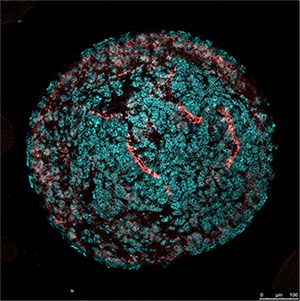People who have lost their hearing may one day be able to get it back, thanks to recent research on the inner ear. Scientists funded by the National Institutes of Health have discovered a way to replace the delicate cells in the inner ear that enable us to hear. Using inner ear tissue from mice, non-human primates (rhesus macaques), and humans, the scientists grew a large batch of the delicate sound-detecting cells, called hair cells. The new study shows that the scientists can grow enough hair cells to test possible drug treatments for hearing loss in living cells.

Scientists on the team represented Harvard Medical School, Massachusetts Institute of Technology, Massachusetts Eye and Ear Infirmary, and Brigham and Women’s Hospital, and reported their findings in the February 21, 2017, issue of Cell Reports. Their big breakthrough came when they identified two small molecules that, when added to their earlier recipe for growing hair cells, helped them to increase the number of hair cells they could grow in the laboratory. A similar technique also helped them grow significantly more hair cells from non-human primate and human ear tissue. This is important because they now have enough cells to test potential drug treatments for hearing loss in living cells from both animal models and humans.
Hair cells detect sound and send sound information to the parts of our brain that interpret and respond to the sound. Our hair cells can be damaged or destroyed by exposure to loud noise, injury, and certain medications. Although fish and birds can replace damaged hair cells, mammals, including humans, cannot. Scientists have long sought to overcome this human inability to replace lost hair cells.
As their next step, the team will try to identify drugs that encourage lab-grown hair cells to multiply. They hope to use those drugs directly on damaged human inner ears to stimulate replacement of lost hair cells.
Hearing loss is a common problem. Approximately 15 percent of American adults (37.5 million) aged 18 and over report some trouble hearing, and about 2 to 3 out of every 1,000 children in the U.S. are born with a detectable level of hearing loss in one or both ears. If scientists can help humans replace lost hair cells, we may one day be able to regain lost hearing.
Last Updated Date



